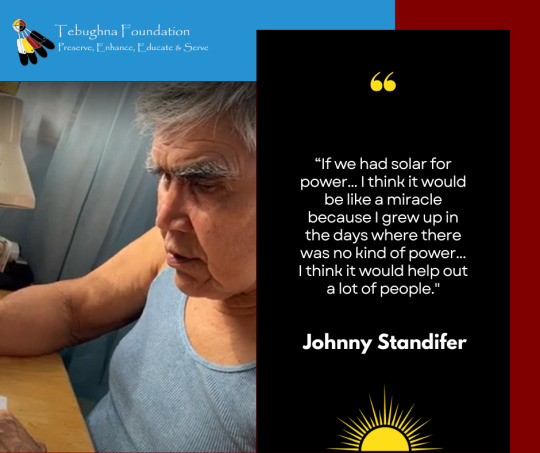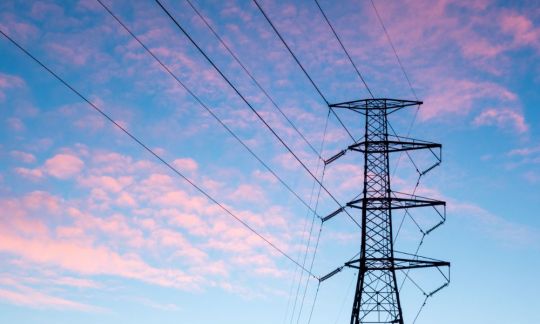#solar microgrids
Explore tagged Tumblr posts
Text
Tata Power and Dairy Board Join Forces to Boost Green Energy in Milk Production
NDDB and TP Renewable Microgrid Sign MoU to Revolutionize Dairy Sector with Sustainable Solutions In a groundbreaking move, the National Dairy Development Board and Tata Power’s subsidiary have united to integrate renewable energy across India’s dairy industry, aiming to enhance sustainability and efficiency in milk production. JAMSHEDPUR – The dairy sector in India is set for a green revolution…
#बिजनेस#biogas from cattle dung#business#carbon-neutral village#dairy industry sustainability#energy-efficient dairy operations#green energy adoption#NDDB eco-friendly dairy#renewable energy in agriculture#Rural development India#solar microgrids#Tata Power green initiatives
0 notes
Text
Suncatcher Energy was started in 2018 by Curt Van Hove, MBA who as the owner remains very active in the day to day operations.
We sell, install and maintain Solar Microgrids and EV charging stations. To install any system, we can spend as much as 6 months doing an extensive analysis of your energy usage, project requirements and working with you to get company approval. All at no cost.
Our goal is to develop a system that is totally independent of the power grid at the right price. We also install Level 2 and 3 EV charging stations. By using your Microgrid, your charging stations always have power, use renewable
CAPABILITIES
Install Solar Microgrids and EV Charging Stations
Perform free upfront solar analysis and design
Obtain grants and rebates for you
Obtain payback of less than 5 years.
Generate Power 24/7/365 with no outages
Monitor and repair any solar installation
Generate passive income from Level 3 EV Chargers
Provide guarantees and warranties to minimize risk
Install solar panels on the ground or on a roof
Unsurpassed expertise in Fortress batteries and inverters
DIFFERENTIATORS
Use Made in America materials
We will virtually eliminate your power bill.
Been in the solar business for over 13 years.
Provide a written Guarantee.
Our owner manages every project
Our battery expert consults to the manufacturer.
Only use Lithium Iron Phosphate Batteries.
Specialists in SMB, Industrial, Commercial, Government
Considerably reduce or eliminate demand charges
Think out of the box, no cookie cutter approach


#Solar Engineering#solar carports#solar canopies#solar batteries#Solar#reduce power bill#reduce demand#off grid#microgrids#EV charging stations#emergency solar generators
0 notes
Text
Anti-Islanding Protection: Safety in Solar Power Systems
In the rapidly evolving world of renewable energy, solar power has emerged as a frontrunner in the quest for sustainable electricity generation. As more solar installations are integrated into the grid, the importance of safety mechanisms has become paramount. One crucial safety feature that often goes unnoticed by the general public, yet is indispensable for engineers and technicians, is Anti-Islanding Protection. This article delves into the intricacies of this vital safeguard, exploring its significance, functionality, and implementation in modern solar power systems.
At its core, Anti-Islanding Protection is a safety mechanism designed to prevent solar inverters from feeding power into the grid when the main power supply is disconnected. This situation, known as “islanding,” can pose significant risks to utility workers and equipment. The term “island” in this context refers to a portion of the electrical system that becomes isolated from the main grid but continues to be energized by local power sources, such as solar panels.
The Risks of Islanding
To fully appreciate the importance of Anti-Islanding Protection, it’s crucial to understand the potential hazards of an islanding situation. When a section of the grid becomes disconnected from the main power supply, utility workers may assume it’s de-energized and safe to work on. However, if solar inverters continue to feed power into this isolated section, it creates a dangerous environment where unexpected live circuits can cause severe injuries or even fatalities.
Moreover, islanding can lead to equipment damage due to voltage and frequency fluctuations. Without the stabilizing influence of the main grid, the isolated section may experience power quality issues that can harm sensitive electronic devices connected to the system.
Read More: Anti Islanding Protection
#anti islanding#solar power#antiislanding#solarpower#solarpanel#renewables#cleanenergy#sustainability#gridintegration#gridstability#powerquality#safety#microgrid#offgrid#gridtied#gridconnected#gridsafety#powergrid#electricity#energyefficiency#climatechange#globalwarming#renewableenergy#solartechnology#energytransition#energyfuture#technology#science#innovation#engineering
0 notes
Text
Solar-Powered Microgrids Market Size, Analysis, Industry, Report | 2024 to 2032

The Reports and Insights, a leading market research company, has recently releases report titled “Solar-Powered Microgrids Market: Global Industry Trends, Share, Size, Growth, Opportunity and Forecast 2024-2032.” The study provides a detailed analysis of the industry, including the global Solar-Powered Microgrids Market share, size, trends, and growth forecasts. The report also includes competitor and regional analysis and highlights the latest advancements in the market.
Report Highlights:
How big is the Solar-Powered Microgrids Market?
The global solar-powered microgrids market is expected to register a CAGR of 17.1% over the forecast period of 2024-2032.
What are Solar-Powered Microgrids?
Solar-powered microgrids are self-contained energy systems that utilize solar energy to generate and distribute electricity within a specific locality or community. These systems include solar panels, battery storage, and control mechanisms to efficiently manage power distribution. By harnessing solar energy, microgrids offer a sustainable and reliable electricity source, particularly beneficial for remote or underserved areas. They provide energy independence from the main grid, enhance resilience, decrease reliance on fossil fuels, and contribute to grid stability, making them an effective solution for improving energy infrastructure and sustainability in both urban and rural settings.
Request for a sample copy with detail analysis: https://www.reportsandinsights.com/sample-request/2433
What are the growth prospects and trends in the Solar-Powered Microgrids industry?
The solar-powered microgrids market growth is driven by various factors and trends. The market for solar-powered microgrids is experiencing significant growth, driven by the increasing need for sustainable and reliable energy solutions. As demand rises for energy security and climate-friendly power sources, especially in remote or underserved areas, solar-powered microgrids are becoming an attractive option. These systems, which combine solar panels, battery storage, and advanced control technologies, provide a clean and dependable energy supply, enhancing energy independence. The market's expansion is supported by declining costs of solar technology, government incentives, and increased investments in renewable energy infrastructure. Leading regions, including North America, Europe, and Asia, are at the forefront of adopting solar-powered microgrids to improve energy reliability and sustainability. Hence, all these factors contribute to solar-powered microgrids market growth.
What is included in market segmentation?
The report has segmented the market into the following categories:
By Type
Grid-Connected Microgrids
Off-Grid Microgrids
By Components
Solar Panels
Inverters
Battery Storage
Control Systems
Other Components
By End Use
Residential
Commercial
Industrial
Utilities
North America
United States
Canada
Europe
Germany
United Kingdom
France
Italy
Spain
Russia
Poland
Benelux
Nordic
Rest of Europe
Asia Pacific
China
Japan
India
South Korea
ASEAN
Australia & New Zealand
Rest of Asia Pacific
Latin America
Brazil
Mexico
Argentina
Middle East & Africa
Saudi Arabia
South Africa
United Arab Emirates
Israel
Rest of MEA
Who are the key players operating in the industry?
The report covers the major market players including:
Schneider Electric
Tata Power Solar Systems Ltd.
Eaton
Solex Energy Limited
Boston Solar
ETAP
GE Vernova
ABB
S&C Electric Company
View Full Report: https://www.reportsandinsights.com/report/Solar-Powered Microgrids-market
If you require any specific information that is not covered currently within the scope of the report, we will provide the same as a part of the customization.
About Us:
Reports and Insights consistently mееt international benchmarks in the market research industry and maintain a kееn focus on providing only the highest quality of reports and analysis outlooks across markets, industries, domains, sectors, and verticals. We have bееn catering to varying market nееds and do not compromise on quality and research efforts in our objective to deliver only the very best to our clients globally.
Our offerings include comprehensive market intelligence in the form of research reports, production cost reports, feasibility studies, and consulting services. Our team, which includes experienced researchers and analysts from various industries, is dedicated to providing high-quality data and insights to our clientele, ranging from small and medium businesses to Fortune 1000 corporations.
Contact Us:
Reports and Insights Business Research Pvt. Ltd. 1820 Avenue M, Brooklyn, NY, 11230, United States Contact No: +1-(347)-748-1518 Email: [email protected] Website: https://www.reportsandinsights.com/ Follow us on LinkedIn: https://www.linkedin.com/company/report-and-insights/ Follow us on twitter: https://twitter.com/ReportsandInsi1
#Solar-Powered Microgrids Market share#Solar-Powered Microgrids Market size#Solar-Powered Microgrids Market trends
0 notes
Text
The Energy Expo 2024
Powering the Future at The Energy Expo 2024

#Clean#Energy#electric#vehicles#Efficiency#Savings#Storage#Solutions#Green#Building#Design#Services#Products#GreenBuildings#microgrids#Power#Renewable#Solar#Panels
0 notes
Text
The Future of Renewable Energy: Innovations and Trends
Introduction
The need for sustainable energy solutions has reached an unprecedented level of importance.. As global demand for energy continues to rise, the need for renewable energy sources becomes increasingly urgent. Renewable energy not only offers a cleaner alternative to fossil fuels but also promises to meet our energy needs sustainably. In this article, we at TechtoIO explore the future of renewable energy, focusing on the latest innovations and trends driving this vital sector forward. Read to continue link
#Innovation Insights#Tagsenergy storage solutions#future of renewable energy#green hydrogen#grid modernization#hydrogen energy#microgrids#renewable energy#renewable energy benefits#renewable energy challenges#renewable energy future#renewable energy innovations#renewable energy investment#renewable energy landscape#renewable energy policies#renewable energy technologies#renewable energy trends#solar technology#sustainable energy solutions#Best Fitness Gadgets to Boost Your Workout Routine#Technology#Science#business tech#Adobe cloud#Trends#Nvidia Drive#Analysis#Tech news#Science updates#Digital advancements
1 note
·
View note
Text
Rural Health Centers Across Tennessee Getting Solar Microgrids
Rural Health Centers Across Tennessee Getting Solar Microgrids....
Rural health centers in Tennessee may soon be better prepared for future power outages. The U.S. Department of Energy is providing grants to install solar microgrids across the Southeast. Selected health centers will get solar panels and battery systems that can operate like a mini grid: If the power goes out, these health centers can still offer critical services like ventilation, dialysis and…

View On WordPress
0 notes
Text
Distributed Energy Generation Market Business Trends,key Factors,Strategies and Huge Demand and opportunity by 2032
Market Overview: The Distributed Energy Generation (DEG) Market refers to the market for decentralized energy generation systems that produce electricity closer to the point of consumption. DEG systems include solar photovoltaic (PV) panels, wind turbines, small-scale gas turbines, fuel cells, and microgrids. These systems offer benefits such as increased energy efficiency, reduced transmission losses, enhanced grid resilience, and the potential for utilizing renewable energy sources.
The global distributed energy generation market size was valued at $246.4 billion in 2020, and is forecasted to reach $919.6 billion by 2030, growing at a CAGR of 14.2% from 2021 to 2030.
Here's an overview of the trends, scope, and demand in the Distributed Energy Generation (DEG) Market:
Trends:
Renewable Energy Dominance: Distributed energy generation is increasingly driven by renewable sources such as solar photovoltaic (PV), wind, and hydroelectric power. The transition towards cleaner energy sources is a prominent trend in the DEG market, supported by favorable policies and decreasing renewable energy costs.
Decentralization of Power Generation: The shift towards decentralized power generation is a significant trend. DEG systems allow energy to be generated closer to the point of consumption, reducing transmission losses and enhancing grid resilience.
Microgrids and Energy Resilience: The rise of microgrids, which are smaller-scale energy systems that can operate independently or in conjunction with the main grid, offers increased energy resilience during grid outages or disruptions. Microgrids, often powered by DEG sources, are gaining traction in both urban and remote areas.
Smart Technologies and IoT Integration: The integration of smart technologies and the Internet of Things (IoT) is transforming the DEG landscape. Smart meters, sensors, and advanced controls enable efficient energy management, real-time monitoring, and optimal utilization of distributed resources.
Energy Storage Integration: The combination of distributed energy generation with energy storage solutions, such as batteries, enhances the reliability and flexibility of DEG systems. Storage systems allow excess energy to be stored for later use, improving energy management and grid stability.
Scope:
Residential Sector: Distributed energy generation offers homeowners the opportunity to generate their own energy, reduce electricity bills, and potentially earn revenue by feeding excess energy back into the grid.
Commercial and Industrial Sectors: Businesses and industries can deploy DEG systems to reduce operational costs, enhance energy resilience, and demonstrate their commitment to sustainability.
Remote Areas and Off-Grid Solutions: DEG systems provide a viable solution for providing electricity to remote and off-grid areas where grid connection is challenging or uneconomical.
Microgrid Development: The scope of microgrids powered by distributed energy sources is expanding, catering to critical facilities, military bases, campuses, and communities seeking energy independence and resilience.
Demand:
Energy Security and Reliability: The need for reliable and secure energy supply is a fundamental driver for DEG adoption. Businesses and communities are increasingly valuing energy independence to mitigate the risks of grid outages and supply disruptions.
Environmental Sustainability: Growing awareness of environmental concerns is fueling demand for cleaner energy options. Distributed energy generation, particularly from renewable sources, aligns with sustainability goals and reduces carbon footprints.
Economic Benefits: DEG systems can offer significant long-term cost savings by reducing energy bills, avoiding peak demand charges, and potentially generating revenue through excess energy sales.
Energy Access in Remote Areas: The demand for electricity access in remote and underserved areas drives the adoption of DEG solutions, which can provide a reliable and cost-effective alternative to extending traditional grid infrastructure.
Grid Resilience and Disaster Preparedness: Microgrids and DEG systems gain demand from entities seeking improved resilience during natural disasters or grid failures, ensuring continuous energy supply for critical operations.
Regulatory Support and Incentives: Government incentives, subsidies, and policies that promote renewable energy and energy independence are significant demand drivers for DEG technologies.
The Distributed Energy Generation market is rapidly evolving to meet the demand for cleaner, more reliable, and decentralized energy solutions. Technological advancements, favorable policies, and changing consumer preferences are shaping the market's growth and expanding its scope across various sectors and regions.
Challenges: The distributed energy generation market also faces certain challenges, including:
Grid Integration and Regulatory Frameworks
Initial Costs and Financing
Grid Resilience and Stability
Overall, the distributed energy generation market offers substantial opportunities driven by energy security concerns, environmental sustainability goals, and the need for energy access. Overcoming challenges related to grid integration, financing, and grid stability will be critical to realizing the full potential of distributed energy generation and maximizing its benefits on a global scale.
By visiting our website or contacting us directly, you can explore the availability of specific reports related to this market. These reports often require a purchase or subscription, but we provide comprehensive and in-depth information that can be valuable for businesses, investors, and individuals interested in this market.
“Remember to look for recent reports to ensure you have the most current and relevant information.”
Click Here, To Get Free Sample Report: https://stringentdatalytics.com/sample-request/distributed-energy-generation-market/10963/
Market Segmentations:
Global Distributed Energy Generation Market: By Company
• Bloom Energy
• Capstone Turbine
• General Electric
• Huawei Technologies
• Schneider Electric
• Siemens
• Ballard
• Enercon
• Goldwind
• SMA Solar Technology
• Suzlon
• Yingli Solar
Global Distributed Energy Generation Market: By Type
• Solar PV
• CHP
• Fuel cells
• Wind Power
• Other
Global Distributed Energy Generation Market: By Application
• Rural Areas
• Urban Areas
Global Distributed Energy Generation Market: Regional Analysis
The regional analysis of the global Distributed Energy Generation market provides insights into the market's performance across different regions of the world. The analysis is based on recent and future trends and includes market forecast for the prediction period. The countries covered in the regional analysis of the Distributed Energy Generation market report are as follows:
North America: The North America region includes the U.S., Canada, and Mexico. The U.S. is the largest market for Distributed Energy Generation in this region, followed by Canada and Mexico. The market growth in this region is primarily driven by the presence of key market players and the increasing demand for the product.
Europe: The Europe region includes Germany, France, U.K., Russia, Italy, Spain, Turkey, Netherlands, Switzerland, Belgium, and Rest of Europe. Germany is the largest market for Distributed Energy Generation in this region, followed by the U.K. and France. The market growth in this region is driven by the increasing demand for the product in the automotive and aerospace sectors.
Asia-Pacific: The Asia-Pacific region includes Singapore, Malaysia, Australia, Thailand, Indonesia, Philippines, China, Japan, India, South Korea, and Rest of Asia-Pacific. China is the largest market for Distributed Energy Generation in this region, followed by Japan and India. The market growth in this region is driven by the increasing adoption of the product in various end-use industries, such as automotive, aerospace, and construction.
Middle East and Africa: The Middle East and Africa region includes Saudi Arabia, U.A.E, South Africa, Egypt, Israel, and Rest of Middle East and Africa. The market growth in this region is driven by the increasing demand for the product in the aerospace and defense sectors.
South America: The South America region includes Argentina, Brazil, and Rest of South America. Brazil is the largest market for Distributed Energy Generation in this region, followed by Argentina. The market growth in this region is primarily driven by the increasing demand for the product in the automotive sector.
Click Here, To Buy Report: https://stringentdatalytics.com/purchase/distributed-energy-generation-market/10963/?license=single
Reasons to Purchase Distributed Energy Generation Market Report:
Comprehensive Market Insights: Global research market reports provide a thorough and in-depth analysis of a specific market or industry. They offer valuable insights into market size, growth potential, trends, challenges, and opportunities, helping businesses make informed decisions and formulate effective strategies.
Market Analysis and Forecasts: These reports provide detailed analysis and forecasts of market trends, growth rates, and future market scenarios. They help businesses understand the current market landscape and anticipate future market developments, enabling them to plan and allocate resources accordingly.
Competitive Intelligence: Global research market reports provide a competitive landscape analysis, including information about key market players, their market share, strategies, and product portfolios. This information helps businesses understand their competitors' strengths and weaknesses, identify market gaps, and develop strategies to gain a competitive advantage.
Industry Trends and Insights: These reports offer insights into industry-specific trends, emerging technologies, and regulatory frameworks. Understanding industry dynamics and staying updated on the latest trends can help businesses identify growth opportunities and stay ahead in a competitive market.
Investment and Expansion Opportunities: Global research market reports provide information about investment opportunities, potential markets for expansion, and emerging growth areas. These reports help businesses identify untapped markets, assess the feasibility of investments, and make informed decisions regarding expansion strategies.
Risk Mitigation: Market reports provide risk assessment and mitigation strategies. By analyzing market dynamics, potential challenges, and regulatory frameworks, businesses can proactively identify risks and develop strategies to mitigate them, ensuring better risk management and decision-making.
Cost and Time Efficiency: Conducting comprehensive market research independently can be time-consuming and expensive. Purchasing a global research market report provides a cost-effective and time-efficient solution, saving businesses valuable resources while still gaining access to reliable and detailed market information.
Decision-Making Support: Global research market reports serve as decision-making tools by providing data-driven insights and analysis. Businesses can rely on these reports to support their decision-making process, validate assumptions, and evaluate the potential outcomes of different strategies.
In general, market research studies offer companies and organisations useful data that can aid in making decisions and maintaining competitiveness in their industry. They can offer a strong basis for decision-making, strategy formulation, and company planning.
About US:
Stringent Datalytics offers both custom and syndicated market research reports. Custom market research reports are tailored to a specific client's needs and requirements. These reports provide unique insights into a particular industry or market segment and can help businesses make informed decisions about their strategies and operations.
Syndicated market research reports, on the other hand, are pre-existing reports that are available for purchase by multiple clients. These reports are often produced on a regular basis, such as annually or quarterly, and cover a broad range of industries and market segments. Syndicated reports provide clients with insights into industry trends, market sizes, and competitive landscapes. By offering both custom and syndicated reports, Stringent Datalytics can provide clients with a range of market research solutions that can be customized to their specific needs
Contact US:
Stringent Datalytics
Contact No - +1 346 666 6655
Email Id - [email protected]
Web - https://stringentdatalytics.com/
#Distributed Energy Generation#Renewable Energy#Solar Power#Wind Energy#Microgrids#Energy Independence#Sustainable Energy#Distributed Generation Technologies#Decentralized Energy#Energy Resilience#Off-Grid Power#Distributed Energy Resources#Local Energy Production#Energy Efficiency#Green Energy#Distributed Energy Solutions#Distributed Solar#Distributed Wind#Distributed Energy Systems#Distributed Power Generation.
0 notes
Text
"To change our relationship to the physical world – to end an era of profligate consumption by the few that has consequences for the many – means changing how we think about pretty much everything: wealth, power, joy, time, space, nature, value, what constitutes a good life, what matters, how change itself happens. As the climate journalist Mary Heglar writes, we are not short on innovation. “We’ve got loads of ideas for solar panels and microgrids. While we have all of these pieces, we don’t have a picture of how they come together to build a new world. For too long, the climate fight has been limited to scientists and policy experts. While we need their skills, we also need so much more. When I survey the field, it’s clear that what we desperately need is more artists.”" -Rebecca Solnit. Emphasis added.
Artists are so so important. I've had people tell me they feel bad because, as an artist, they don't think they can contribute anything worthwhile to climate change. They're wrong.
We cannot build a future we cannot imagine. Artists are so important. Artists show us what could be - what we could be
#artists are so so important#climate change#climate crisis#climate news#climate action#quote#quotes#rebecca solnit#literature#climate fiction#clifi#science fiction#the arts#not news#hope#hope posting#solarpunk#hopepunk#excuse my pretentiousness in that last bit pls#art appreciation#artist appreciation#this goes for all types of artists btw!!
351 notes
·
View notes
Text
Dandelion News - November 22-28
Like these weekly compilations? Tip me at $kaybarr1735 or check out my Dandelion Doodles!
1. Los Angeles becomes a sanctuary city for LGBTQ+ youth and immigrants as officials reject Project 2025

“The Los Angeles City Council voted unanimously Tuesday to pass the “sanctuary city” ordinance, shielding queer youth who travel to the city to receive gender-affirming care from prosecution, as well as preventing city resources from being used in immigration enforcement[….]”
2. Huge deforested areas in the tropics could regenerate naturally, study finds

“Cleared or degraded tropical forests around the world covering a combined area larger than Saudi Arabia could regrow on its own, according to new research published Oct. 30 in the journal Nature. [… T]he permanence of regrown forests is critically important to the benefits it can provide to biodiversity and the climate.”
3. Minnesota tribe could soon get a solar-powered resilience hub

“A pair of developers are working to build a microgrid at an elementary school and community center on the White Earth Reservation in northern Minnesota [… which would] provide about 12 hours worth of backup power for residents to be able to charge cell phones, power medical equipment, or stay warm in the event of a power outage.”
4. An exchange between Indonesia and Tanzania supports food security and ocean health

“Around the world, WWF helps manage […] both traditional sustainability-oriented management and science-based practices. This combination supports long-term food security and biodiversity goals. […] Local ownership and management are […] key to achieving stable fisheries and social and economic benefits.”
5. Spiky blue devils and chocolate lilies: Victorian grassland bursts with wildflowers after ecological ‘reset’

“About 70 native plant species could be found within the site, including […] four endangered species of orchid. […] Careful management, including an ecological burn in May and weed control measures to reduce pasture grasses, laid the groundwork for wildflowers to thrive.”
6. Vast forests, wetlands and lakes conserved [in Ontario]

“A vast 970-hectare area featuring thriving forests, wetlands and crystal-clear lakes northeast of Sault Ste. Marie is now protected[….] The intact forests, lakes, wetlands and shorelines support high biodiversity and are home to many threatened species[….]”
7. A New Era of Compassion: How Suncoast Humane Society is Changing Animal Welfare for Good
“Our campus includes outdoor play areas, trails, and even a small swimming pool to encourage animals to stay active, explore, and simply be themselves.”
8. Building climate resilient cocoa farming in West Africa

“[… A] promising new approach to improve climate resilience in cocoa agroforestry across West Africa […] focuses on the critical role of leaf "phenology"—the seasonal changes in leaf cycles—in trees providing shade in managing climate impacts. [… S]hade trees that lose their leaves entirely during the dry season proved especially beneficial in maintaining soil moisture[….]”
9. New Zealanders save more than 30 stranded whales by lifting them on sheets

“[The Department of Conservation] praised as “incredible” the efforts made by hundreds of people to help save the foundering pod. “It’s amazing to witness the genuine care and compassion people have shown toward these magnificent animals[….]””
10. 'A really sobering moment:' English zoo fights extinction of freshwater Boxer pupfish

“Whipsnade Zoo aquarists were recently told by conservation partners that that the world's last remaining Boxer pupfish was in their care, prompting the zoo to carry out the immediate transport of all the "precious" Boxer pupfish eggs to another local conservation and education charity in the name of species preservation.”
November 15-21 news here | (all credit for images and written material can be found at the source linked; I don’t claim credit for anything but curating.)
#hopepunk#good news#los angeles#us politics#lgbt+#immigrants#deforestation#nature#minnesota#native american#indigenous#electricity#solar panels#solar energy#solar power#ocean#fishing#food insecurity#wildflowers#native wildflowers#native plants#conservation#canada#animal shelters#humane society#agroforestry#new zealand#whale#fish#endangered
126 notes
·
View notes
Text
The current U.S. power grid is not fully prepared to handle the rising demand from AI, EVs, and crypto without significant upgrades. While the grid is evolving, challenges include aging infrastructure, transmission bottlenecks, and the need for more renewable energy integration. Here’s a breakdown of key factors:
1. Capacity vs. Demand Growth
• The grid has enough total generation capacity today, but localized demand spikes (like AI data centers or EV clusters) can strain certain regions.
• By 2035, electricity demand could rise by 15-25%, requiring hundreds of gigawatts (GW) of new capacity.
• Many utilities are already struggling to build out transmission lines fast enough to keep up with demand.
2. Grid Reliability & Stress Points
• AI & Data Centers: Large data centers are being built in regions where power supply is already constrained (e.g., Northern Virginia, Texas).
• EV Charging Peaks: If too many EVs charge at the same time, local grids could experience voltage drops or blackouts.
• Extreme Weather: The grid is already vulnerable to extreme heat, storms, and wildfires, which could worsen with climate change.
3. Solutions & Grid Upgrades
• Transmission Expansion: The U.S. needs to build more high-voltage transmission lines to move power from wind/solar farms to urban areas.
• Battery Storage & AI for Grid Management: Advanced battery storage can smooth out supply-demand mismatches, and AI can optimize grid operations.
• Decentralized Energy: Microgrids, rooftop solar, and community battery projects can reduce strain on the centralized grid.
• Smart Charging for EVs: Managed charging (incentivizing off-peak charging) can help distribute demand more evenly.
Can the Grid Handle It?
• Short-term (2025-2030): The grid will face localized stress, especially in high-demand regions. Rolling blackouts or infrastructure failures could occur if upgrades don’t keep pace.
• Mid- to Long-term (2030+): If investments in transmission, renewables, and smart grid technology accelerate, the grid can handle these changes, but delays in modernization could lead to reliability issues.
#politics#us politics#political#donald trump#news#president trump#elon musk#american politics#jd vance#law#power grid#power#gas#oil#solar#wind power#crypto#cryptocurrency#crypto mining#infrastructure#us infrastructure
22 notes
·
View notes
Text
i want to share with you all an exciting development at the intersection of renewable energy, ecological restoration, and Indigenous sovereignty.
Tyonek is a remote Dena'ina Athabascan village located 40 miles from Alaska's largest city, Anchorage. for time immemorial, the Dena'ina have stewarded and honored the land. but the legacy of settler-colonialism and extractive capitalism has impoverished the people of Tyonek.
Indigenous people have been disproportionately affected by climate change and pollution. i encourage you all to be a part of the renewable energy transition and support the Tribal community of Tyonek as they advance the engineering, procurement, and construction of a decentralized solar microgrid.
https://bit.ly/Tebughna-Solar-Program

#solarpunk#alaska#ecology#indigenous#tribal#tribal sovereignty#alaska native#solar#renewable energy#sustainable energy
276 notes
·
View notes
Text
Excerpt from this story from Rolling Stone:
EARLIER THIS WEEK, the Copernicus Climate Change Service, a European Union-funded research group, announced that last Sunday, July 21, 2024, the daily global average temperature hit 62.76 degrees. It was the hottest day scientists have measured since 1940 — which officially makes it the hottest day ever recorded on Earth by humans. Twenty four hours later, however, Copernicus had to update its report: On Monday, the temperature climbed up to 62.87 degrees. As of now, July 22, 2024 is now the hottest day ever recorded.
But hey, it’s only Friday. Who knows what the weekend holds? Or the rest of the summer, for that matter.
Are you shocked by news of this record-breaking heat? Does the fact that you lived through two of the hottest days on Earth that scientists have ever recorded make you think differently about the risks and consequences of living on a rapidly-warming planet? Did you pause for a moment and think about the millions of people who sweat through this without air conditioning? Did you mourn the 396 deaths from heat that are under investigation this summer in Phoenix? Did you sell your car and buy an electric bike? Were you inspired to sign up to knock on doors to help Kamala Harris defeat the climate-hoax-pushing-criminal Donald Trump? Are you getting calls from your MAGA-loving uncle in Idaho apologizing for the long lecture he gave you at Thanksgiving last year about how Earth’s temperature moves in natural cycles, or about how higher levels of CO2 in the atmosphere is good because more CO2 makes crops and trees grow better?
Probably not.
The problem is not you. The problem is that a broken heat record is just another statistic. The story of the climate crisis is written in broken records that measure levels of CO2 pollution, glacial ice melt, rising sea levels, crop failure, megafires, the spread of diseases, heat deaths, wildfire and insurance costs, and economic losses. But if shocking data and broken records could galvanize people to take action on climate, we’d all be powering our iPhones with solar power from microgrids, and millions of cows and chickens would be liberated from factory farms. We’d have cities crowded with bike lanes and a high speed rail service between Dallas and Houston. We’d laugh at climate-hoaxing politicians and debate whether it is fair and just to charge Big Oil companies with criminally negligent homicide.
43 notes
·
View notes
Text
Decentralization: Beyond Finance and Into Freedom

The Age of Centralized Limits
For decades, we’ve lived in a world dominated by centralized systems. From financial institutions to healthcare and governance, centralized structures have dictated how we interact, innovate, and even live our lives. But cracks in these systems have become increasingly visible. Financial crises reveal the fragility of our monetary systems. Data breaches and surveillance expose the vulnerabilities of centralized technology. Censorship and institutional corruption highlight the dangers of entrusting too much power to a few.
These failures beg the question: Is there an alternative? Enter decentralization. Often associated with Bitcoin and cryptocurrency, decentralization offers more than financial freedom. It represents a paradigm shift that can empower individuals across multiple facets of life. Could decentralization be the key to unlocking both individual sovereignty and a more equitable future? Let’s explore.
Bitcoin as the Spark
The story of decentralization begins with Bitcoin. In 2009, Bitcoin introduced a revolutionary idea: a financial system that doesn’t rely on central banks or intermediaries. At its core, Bitcoin isn’t just about money; it’s about freedom. It empowers individuals to own their wealth without fear of censorship, seizure, or devaluation by external forces.
Bitcoin’s success has ignited a broader movement. Its decentralized architecture—a network maintained by individuals rather than a single entity—has inspired innovators to apply this model beyond finance. Today, the philosophy of decentralization is being explored in healthcare, energy, governance, and more.
Decentralization Beyond Finance
Decentralization is proving to be a transformative force across industries:
Healthcare
Imagine owning your medical data. Decentralized health systems built on blockchain technology allow patients to control their records, ensuring privacy and security while eliminating reliance on vulnerable centralized databases. These systems also enable transparent research funding, connecting donors directly with projects and reducing administrative overhead.
Energy
The future of energy lies in peer-to-peer networks. Decentralized energy systems, such as microgrids, empower communities to generate, share, and trade renewable energy. Households with solar panels can sell excess power directly to neighbors, bypassing utility companies. This model not only promotes sustainability but also reduces dependency on monopolistic providers.
Governance
What if voting systems were transparent, tamper-proof, and accessible to everyone? Decentralized governance tools leverage blockchain to create trustless voting platforms, ensuring fair elections and greater civic participation. These systems can also decentralize decision-making, enabling communities to self-govern without bureaucratic interference.
By decentralizing these critical systems, we can create a world where power is distributed more equitably, fostering innovation and resilience.
Individual Freedom at the Core
At its heart, decentralization is about empowering individuals. It shifts control from institutions to people, promoting self-sovereignty in every aspect of life.
Financial Independence: With Bitcoin, you can store and transfer wealth without intermediaries. This is especially critical for people in countries with unstable currencies or oppressive regimes.
Privacy and Censorship Resistance: Decentralized platforms offer alternatives to surveillance-heavy social media and communication tools. Users regain control over their data and speech, free from corporate or governmental censorship.
Permissionless Innovation: Decentralization removes gatekeepers, enabling anyone to create, share, and participate without needing approval from centralized authorities.
This shift isn’t just technological; it’s philosophical. Decentralization aligns with the fundamental human desire for autonomy and self-determination.
Challenges and Opportunities
The road to decentralization isn’t without hurdles. Scalability remains a technical challenge for many decentralized networks. Public understanding is another barrier; many people still view decentralization as complex or niche. Institutional resistance is perhaps the most formidable obstacle, as powerful entities are unlikely to relinquish control easily.
Yet, these challenges present opportunities. Education is key to demystifying decentralization. Innovation will address technical limitations, as we’ve seen with Bitcoin’s Lightning Network and other scaling solutions. And as public demand for transparency and fairness grows, institutions may be compelled to adopt decentralized models.
The Decentralized Path Forward
Decentralization is more than a technological trend; it’s a movement towards a freer, fairer world. By embracing decentralized systems, we can dismantle the inefficiencies and inequities of centralization, empowering individuals and communities to take control of their futures.
The decentralized revolution is just beginning. Whether it’s through Bitcoin, decentralized energy grids, or tamper-proof voting systems, the possibilities are endless. The question isn’t if decentralization will reshape the world, but how quickly it will happen.
The time to act is now. Explore, experiment, and advocate for decentralization in your own life and community. Together, we can build a future that prioritizes individual sovereignty and collective progress—a future where freedom truly thrives.
Take Action Towards Financial Independence
If this article has sparked your interest in the transformative potential of Bitcoin, there's so much more to explore! Dive deeper into the world of financial independence and revolutionize your understanding of money by following my blog and subscribing to my YouTube channel.
🌐 Blog: Unplugged Financial Blog Stay updated with insightful articles, detailed analyses, and practical advice on navigating the evolving financial landscape. Learn about the history of money, the flaws in our current financial systems, and how Bitcoin can offer a path to a more secure and independent financial future.
📺 YouTube Channel: Unplugged Financial Subscribe to our YouTube channel for engaging video content that breaks down complex financial topics into easy-to-understand segments. From in-depth discussions on monetary policies to the latest trends in cryptocurrency, our videos will equip you with the knowledge you need to make informed financial decisions.
👍 Like, subscribe, and hit the notification bell to stay updated with our latest content. Whether you're a seasoned investor, a curious newcomer, or someone concerned about the future of your financial health, our community is here to support you on your journey to financial independence.
Support the Cause
If you enjoyed what you read and believe in the mission of spreading awareness about Bitcoin, I would greatly appreciate your support. Every little bit helps keep the content going and allows me to continue educating others about the future of finance.
Donate Bitcoin: bc1qpn98s4gtlvy686jne0sr8ccvfaxz646kk2tl8lu38zz4dvyyvflqgddylk
#Decentralization#Bitcoin#BlockchainTechnology#IndividualFreedom#SelfSovereignty#FutureOfFinance#Empowerment#PeerToPeer#SustainableEnergy#TransparentGovernance#CensorshipResistance#Innovation#DecentralizedRevolution#TechForGood#DigitalFreedom#cryptocurrency#financial empowerment#finance#globaleconomy#digitalcurrency#financial experts#blockchain#financial education#unplugged financial
2 notes
·
View notes
Text
5 notes
·
View notes
Text
Chauncey Man San Leandro: Electricity Generation Methods
Electricity can be generated through various processes, each with its own advantages, disadvantages, and applications. Here are some common types of electricity generation processes shared by Chauncey Man San Leandro:

Fossil Fuel-Based Generation:
Coal Power Plants: These plants burn coal to produce steam, which drives turbines connected to generators.
Natural Gas Power Plants: Natural gas is burned to spin turbines and generate electricity.
Oil Power Plants: Similar to natural gas plants, but they use oil as the fuel source.
Nuclear Power Generation:
Nuclear reactors use controlled nuclear fission reactions to heat water and produce steam that drives turbines connected to generators.
Renewable Energy Generation:
Solar Power: Photovoltaic (PV) cells convert sunlight into electricity.
Wind Power: Wind turbines capture kinetic energy from the wind and convert it into electricity.
Hydropower: Water flowing through dams or turbines generates electricity.
Geothermal Power: Heat from the Earth's core is used to produce steam that drives generators.
Biomass Power: Organic materials like wood, crop residues, and waste are burned or converted to biogas to generate electricity.
Hybrid Systems:
Some power generation systems combine renewable sources (e.g., solar and wind) with energy storage systems (e.g., batteries) to provide continuous power.
Tidal and Wave Energy:
Tidal and wave energy generators harness the kinetic and potential energy of ocean tides and waves to generate electricity.
Fuel Cells:
Fuel cells combine hydrogen and oxygen to produce electricity, with water as the only byproduct.
Cogeneration (Combined Heat and Power - CHP):
Cogeneration systems produce electricity and useful heat simultaneously, improving overall energy efficiency.
Thermoelectric Generators:
These generators convert heat directly into electricity using temperature differences, often in remote or small-scale applications.
Microgrids:
Microgrids are localized electricity generation and distribution systems that can incorporate various energy sources, including renewables, to provide reliable power to specific areas.
Ocean Thermal Energy Conversion (OTEC):
OTEC systems use temperature differences between warm surface water and cold deep water to generate electricity.
Radioisotope Thermoelectric Generators (RTGs):
RTGs use the heat generated by the radioactive decay of isotopes to produce electricity, often used in space probes and satellites.
Piezoelectric Generation:
Piezoelectric materials generate electricity when subjected to mechanical stress or vibration, used in some specialized applications.

Chauncey Man San Leandro's final words, The choice of electricity generation method depends on factors such as resource availability, environmental impact, cost, and energy demand. Many regions are transitioning to cleaner and more sustainable energy sources to reduce carbon emissions and combat climate change.
#chauncey man san leandro#electricity#electricity generation#power generation#power house#thermal plant#electricity grid#high tension power#USA#california#environment
4 notes
·
View notes